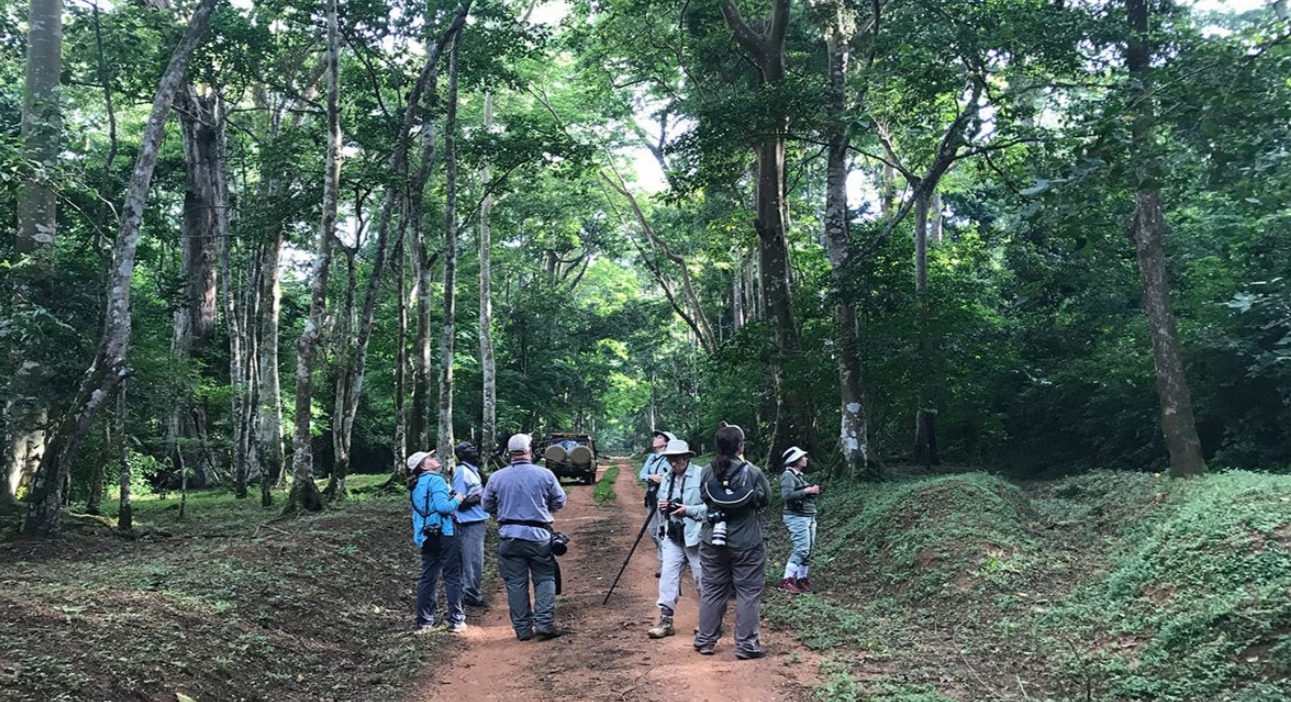
The Secrets of Budongo Forest in Murchison Falls Park
The Secrets of Budongo Forest in Murchison Falls Park, known for its vast biodiversity and numerous tree species, which are dominated by traditional mahogany trees in the East African region. This is one of Africa’s oldest tropical rainforests, including Bwindi Impenetrable Forest among others. Budongo is situated in the Nywoya District of Murchison Falls National Park, northwest Uganda, on the escarpment northeast of Lake Albert. It occupies an area of more than 825 square kilometers and is famous for its chimpanzee trekking, birdwatching, and nature walks in the Royal Mile, Kaniyo Pabidi, and Busingiro.
This primaeval forest is home to over 464 tree species, 24 animals, and 9 primates, including olive baboons and black and white colobus monkeys. The largest mahogany tree species in all of East Africa, with trees growing to a height of more than 80 metres, may be found in this premier forest destination. Hardwood trees and a variety of other tree types make the forest even more biodiverse than others.
On their way to Murchison Falls National Park, visitors can enjoy the chirping birds and the sounds of many wildlife species in the forest, which is one of the most breathtaking locations with its emerald green and natural beauty. Furthermore, this trip provides breathtaking views of the very intelligent chimpanzees, who are near relatives of humans and share 98% of their DNA. Nature lovers and birdwatchers will have the opportunity to see a variety of birds, particularly forest birds like hornbills, flycatchers, bee-eaters, and kingfishers. On a fortunate day, you might even see the endemic Puvel’s Illadopsis and other species.
Top Attractions and Secrets of Budongo Forest
Chimpanzees
Since they share 98% of their DNA with humans, the forest’s most popular attraction is the chimpanzees, which attract visitors from all over the world. Through chimpanzee trekking in Budongo Forest, tourists can venture into the jungle to see chimpanzees in their natural habitat. Depending on where the chimpanzees are, it will take you 2 to 4 hours searching for these apes. Visitors will have the opportunity to witness and observe other primates throughout the trekking exercise, including pottos, galagos, vervets, red-tailed and blue monkeys, and black and white colobus monkeys. Upon seeing these primates, you will spend an hour with them as you observe them in their day-to-day routines and capture memorable photos.
In general, there are a fair number of habituated chimpanzees in Budongo Forest that can be accessed for trekking. A valid chimpanzee trekking permit is required to track these primates in their natural habitat. You will have the opportunity to spend an hour interacting with the apes in their natural habitats.
In addition to the usual chimpanzee trekking, Budongo Forest offers visitors a chimpanzee habituation experience, in which they can spend four hours in the jungle with the semi-habituated chimpanzees and observe their daily routines. This activity enables chimpanzees to get accustomed to, and trekkers can enjoy an amazing experience while taking photos and videos.
Wildlife Species
Due to Budongo Forest’s location within Murchison Falls National Park, visitors, particularly those who are interested in wildlife, have the opportunity to go on game drives in the park’s northern region, where they can see a variety of wildlife species during morning, evening, and nighttime game drives. Rothschild’s giraffes, Leopards, topis, spotted hyenas, elephants, Jackson Hartebeest, lions, waterbucks, warthogs, topis, and many more nocturnal and diurnal animals can be seen.
Birds of Budongo Forest
Following the Secrets of Budongo Forest, with more than 360 different species of birds, the forest is a top location for birdwatchers, particularly in the Royal Mile, Kaniyo Pabidi, and Busingiro. This allows birdwatchers to see several bird species at popular birding locations, including the Royal Mile and Kaniyo Pabidi, among others. Along with several other bird species that are frequently seen in tropical rainforests, it will introduce you to the endemic Pulvel’s Illadopsis.
The forest will introduce you to bird species such as Golden Crowned Woodpecker, Piping Hornbill, Fire-crested Alethe, African Dwarf Kingfisher, Nahan’s Francolin, Scaly-breasted Illadopsis, Yellow-footed Flycatcher, Crested Guineafowl, Blue-throated Roller, African Pitta, White-thighed Hornbill, Hairly-breasted Barbet, and others.
Accommodation
There are many different types of lodging alternatives in the forest, including budget, mid-range, and luxury options. Red Chill Rest Camp, Budongo Eco Lodge, Paraa Safari Lodge, Sambiya River Lodge, Pabidi Lodge, Pakuba Park Lodge, and other establishments from the park and forest are included in this category.
Accessing Budongo Forest
Budongo Forest is accessible by road from Kampala or Entebbe International Airport via the Luwero-Nakasongola to Masindi town, as it is a part of Murchison Falls National Park. It takes roughly five hours to go to Budongo Forest. An alternative is to fly to Pakuba Airstrip from Entebbe International Airport or Kajjansi Airfield, then take a drive to Budongo Forest headquarters.
Best time to visit Budongo Forest
Although Budongo Forest is open year-round, certain months are better than others for visits. The dry season, which runs from June to September and December to February, is the best time of year to visit Budongo Forest. Because there is little to no rain during these months, the trekking paths are accessible and dry for chimpanzee tracking and bird species observation. Furthermore, the short and low foliage cover provides unobstructed views of Budongo Forest’s distinctive features.
Following the Secrets of Budongo Forest, the rainy season, often called the low season, is another time of year to visit the forest. The wet months of March through May and October through November are when this happens. However, because of the heavy rains during these months, the trekking trails often become slick and slippery, making tracking somewhat difficult. Additionally, the dense growth hides the forest’s natural features.
